
The Mausoleum of Moulay Ismail
The Mausoleum of Sultan Moulay Ismail
Moulay Ismail Ibn Sharīf ruled for 55 years,
the longest of any Sultan of Morocco,
from 1672 until his death in 1727.
Morocco reached a peak of its power under Moulay Ismail.
He centralized power by relying on his Abid al-Bukhari,
an army of Black African slaves who were devoted to him.
Unruly tribes became much less of a threat.
He expelled the Europeans from Tangier and other ports
they had occupied.
The French consul in Salé wrote in 1698 that
"the vast extent of the Sharifan Empire is a single
unit from the Mediterranean to the
Senegal river."
His fleet of pirates and privateers captured European ships
and thus prisoners and weapons across the Mediterranean.
And, he found time to father
over 1,000 children with at least 500 concubines.
Europeans described him as cruel, merciless,
greedy, and untrustworthy.
One writer reported that he had over 36,000 people killed
during a 26-year period of his reign.
Another reported 20,000 assassinations during
a twenty-year period.
But he finally died,
and an elaborate funerary complex was built
within his enormous kasbah complex.
Today it's one of the primary sights in Meknès.
Here is its elaborately decorated entrance.
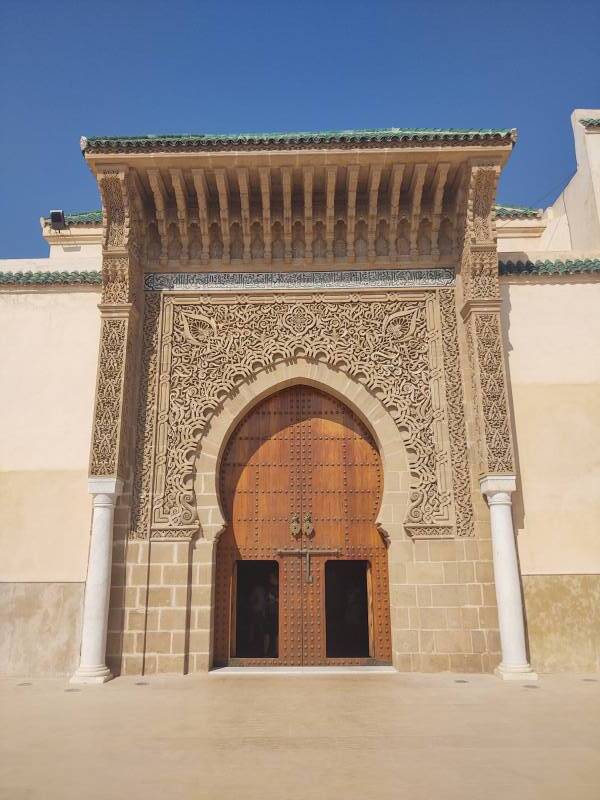
Moulay Ismail chose to locate his mausoleum on the southwest side of his Dar al-Kebira palace, within his fortified kasbah. The area was already sanctified by the presence of the tomb of the 16th century poet and Sufi mystic Sidi 'Abd ar-Rahman al-Majdub.
The entrance gateway and this chamber were added in the early 20th century, during the French Protectorate.
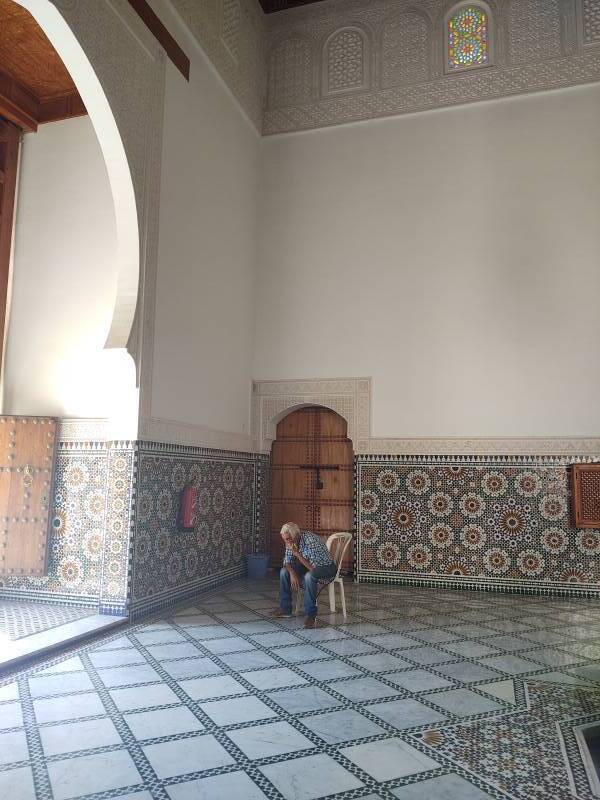
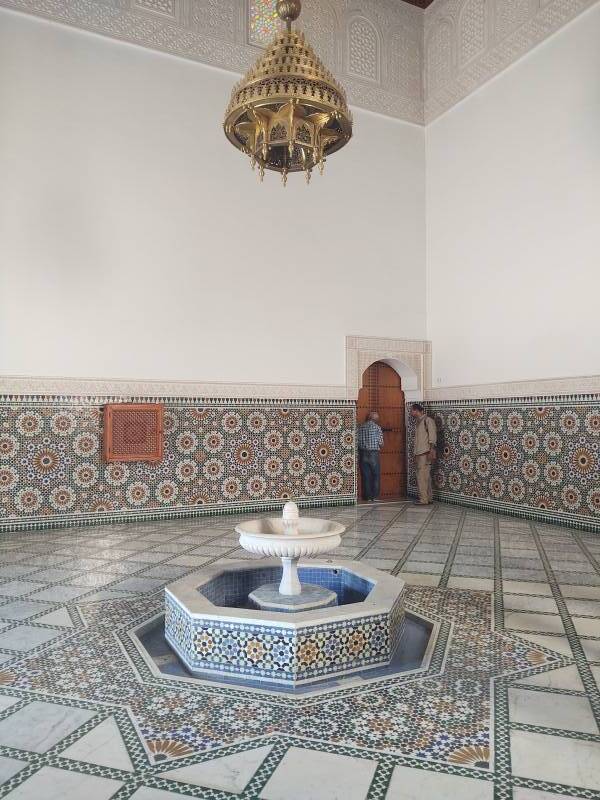
The first courtyard was also added much more recently.
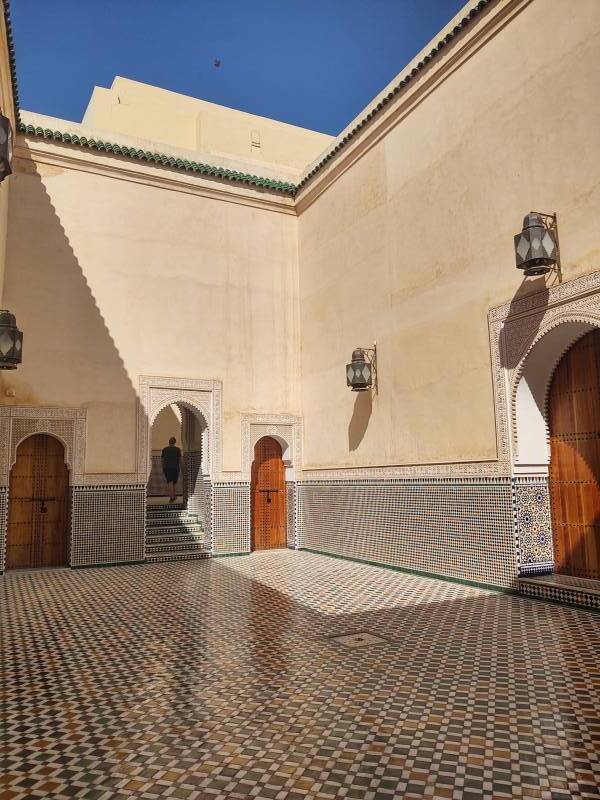
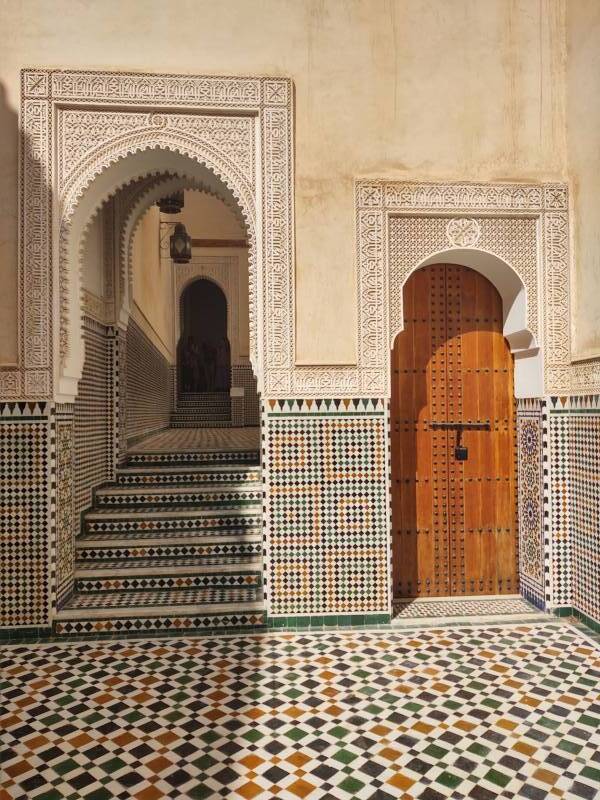
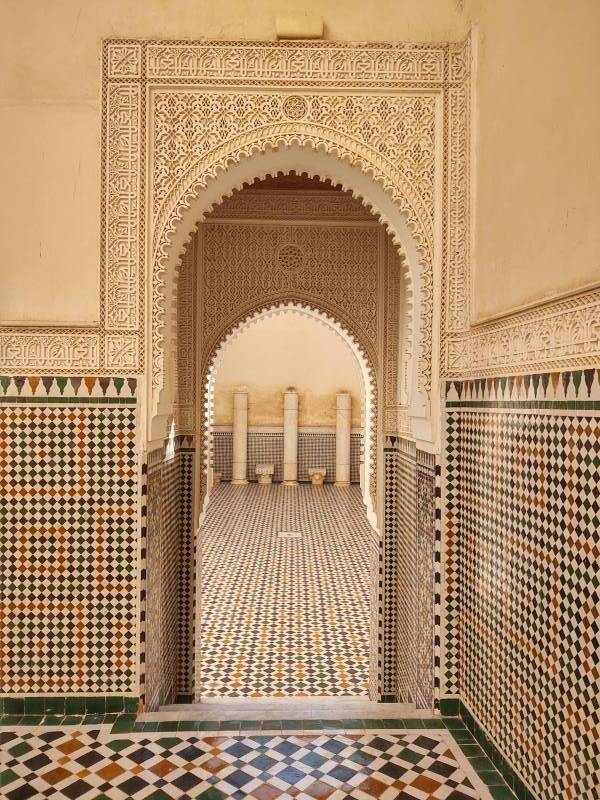
Depending on the time of year that you visit, the main courtyard may be covered to reduce the light and heat. You enter at its right rear, and proceed diagonally across the courtyard toward the mausoleum.
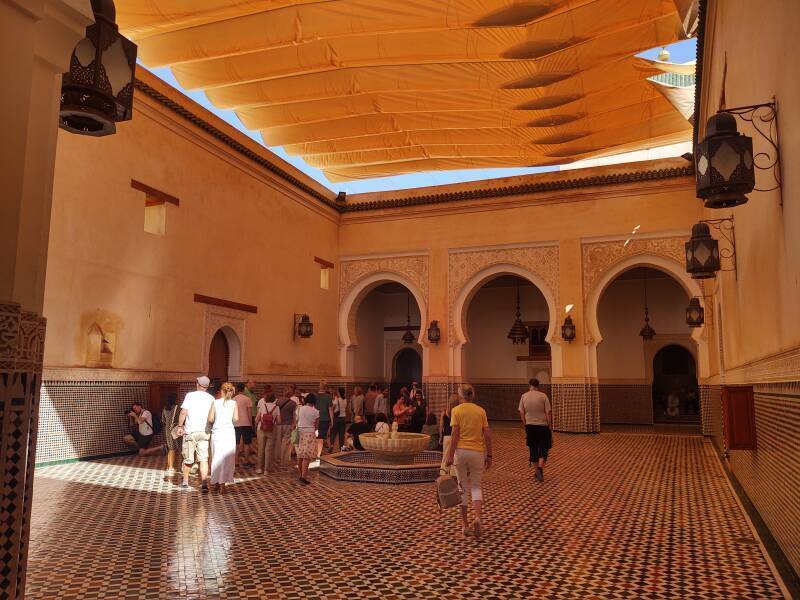
The main courtyard is decorated less than the mausoleum itself but it is still quite ornate.

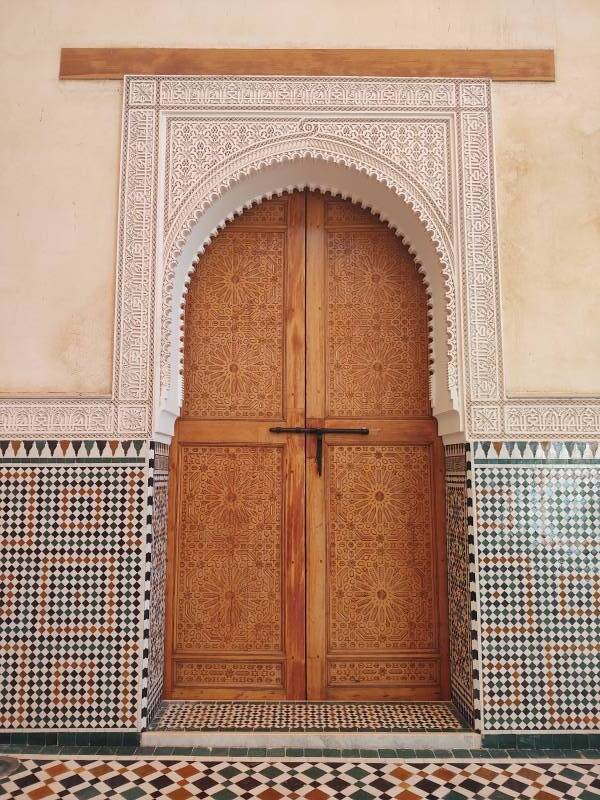
Three arched portals are at the mausoleum end of the main courtyard. A mihrab or niche indicating the direction of prayer is visible through the central one.
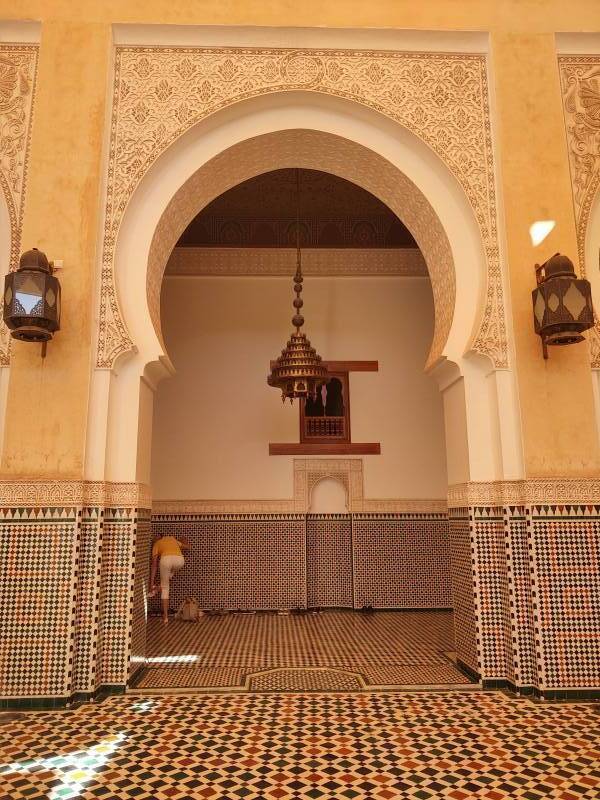
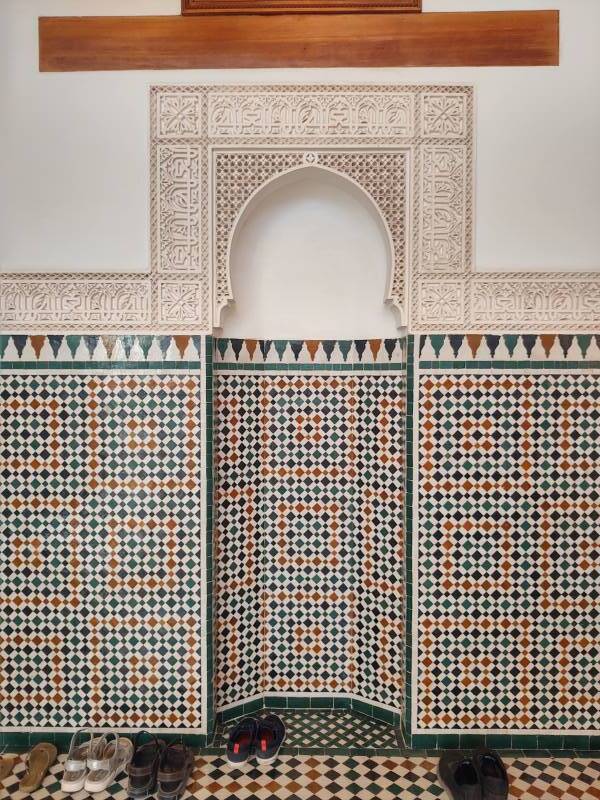
You remove your shoes at the end of the main courtyard, then proceed into the chamber adjoining the tombs.
The first of these chambers extends high enough that its cupola is above the surrounding roof, providing natural light from windows.
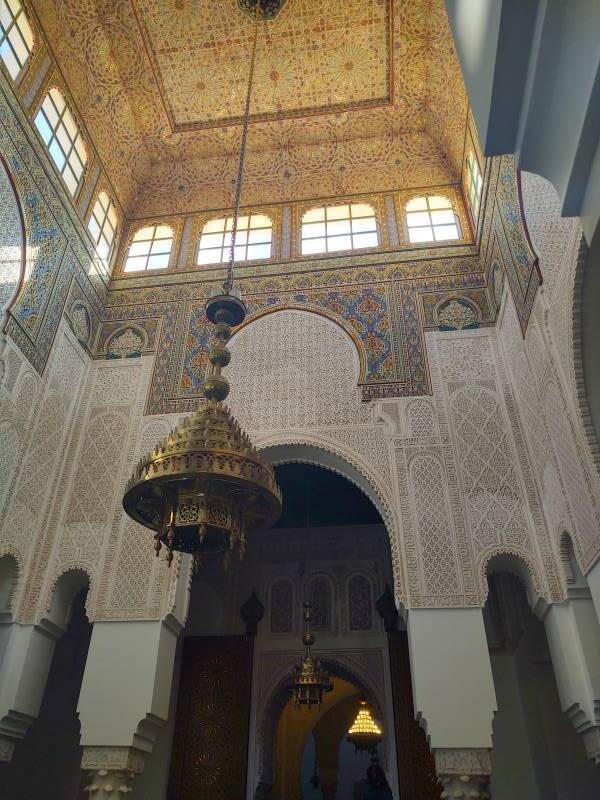
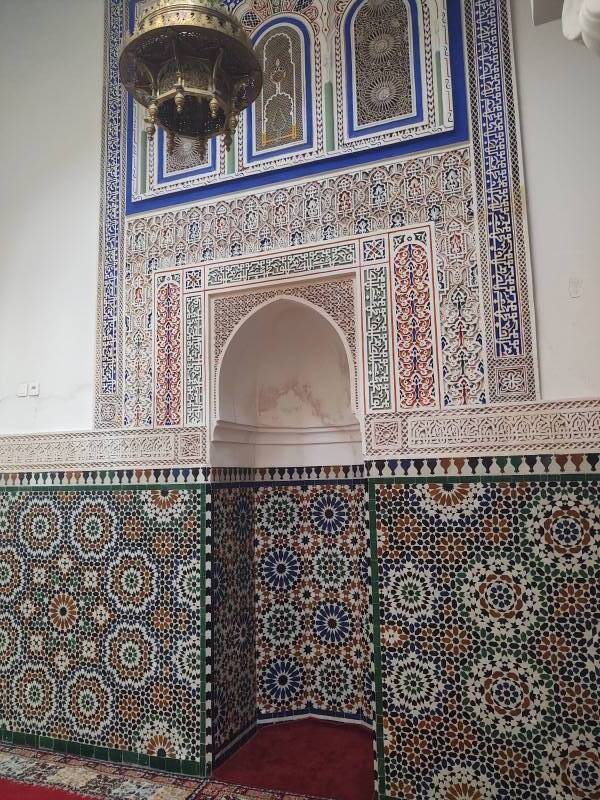
A mihrab is a niche indicating the qibla or direction of prayer. A mihrab is set into a wall. Everyone prays in parallel, facing toward the wall, and not in a fan facing toward the mihrab.
I visited late in the afternoon, The lighting as seen in the below pictures may seem wrong to you. Here's what's going on.
A ḥadīth records Muhammad saying that Muslims should pray "like this", describing facing toward the south. So, everyone faced south to pray.
Later, that ḥadīth was re-interpreted in light of Muhammad having been in Medina, north of Mecca, when he said that. The new thinking was that he must have meant "facing toward Mecca", and specifically toward the Ka'aba, and not "facing south".
In Morocco, mosques were constructed with their qibla roughly south until the Alouite period, beginning with Moulay Ismail's father, and many continued to be built that way for some time. This mihrab indicates a direction of southeast, well south of the actual bearing to Mecca. That leads to some confusion in descriptions of the features within this mausoleum. "South" may refer to the geographic direction, or it may refer to the alignment of the building and its direction of prayer.
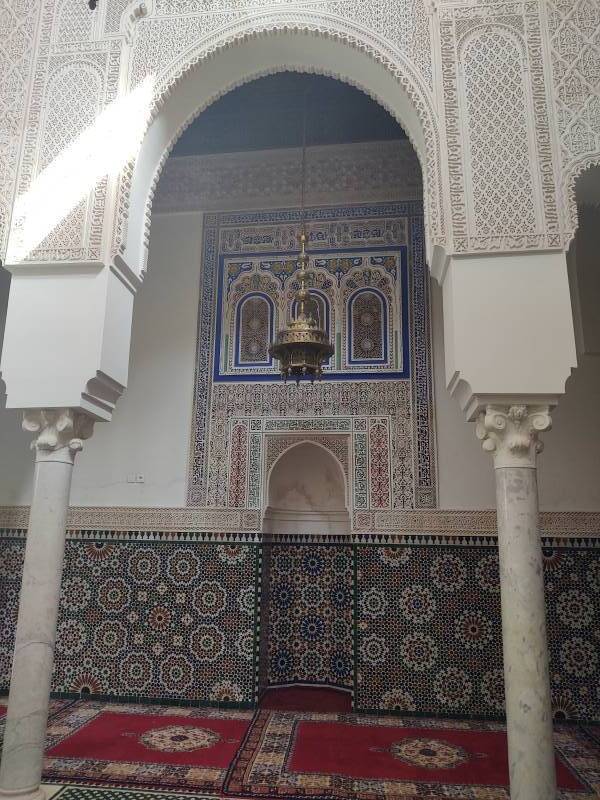
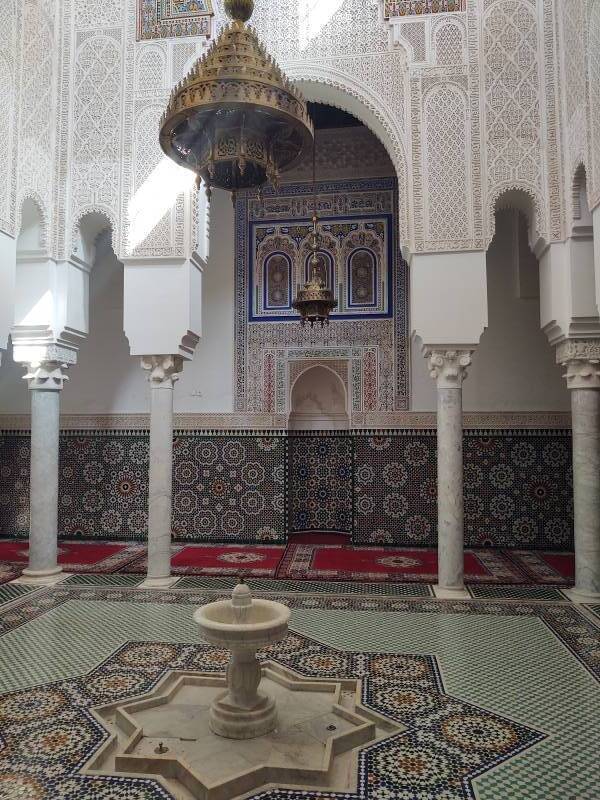
This is a square chamber with four groups of three columns at each corner, with a gallery space running around them.
The floor and lower walls are covered in zillij geometric tile patterns. The upper walls and areas surrounding the mihrab and doorways are covered with stucco carved and painted in complex patterns.
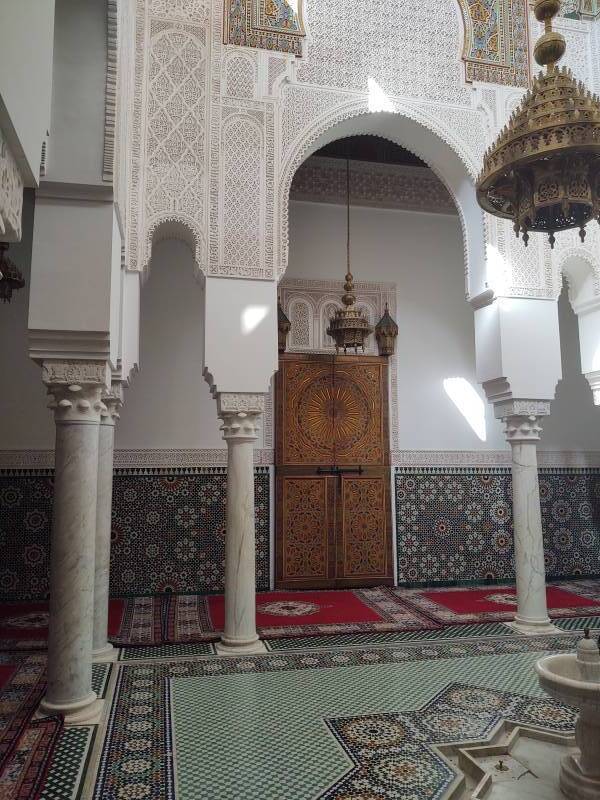
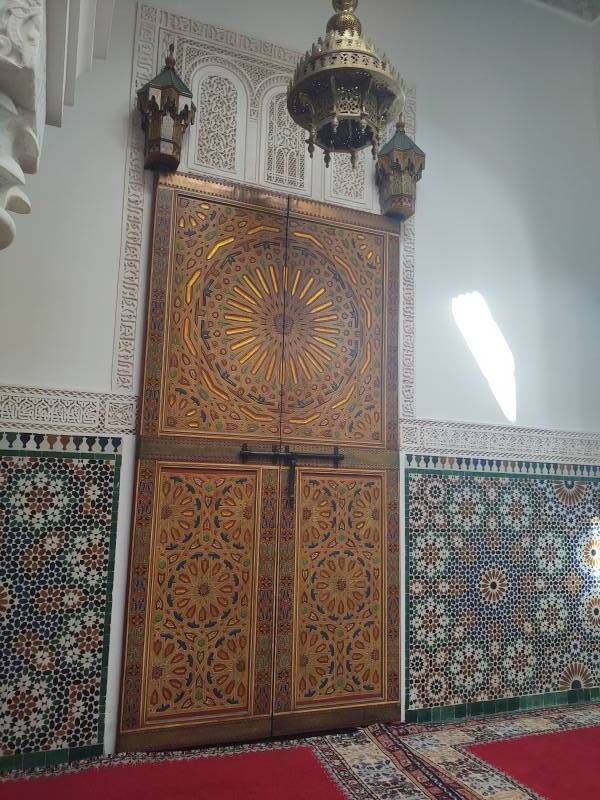
A large arched portal with ornate wooden doors leads toward the mausoleum chamber.
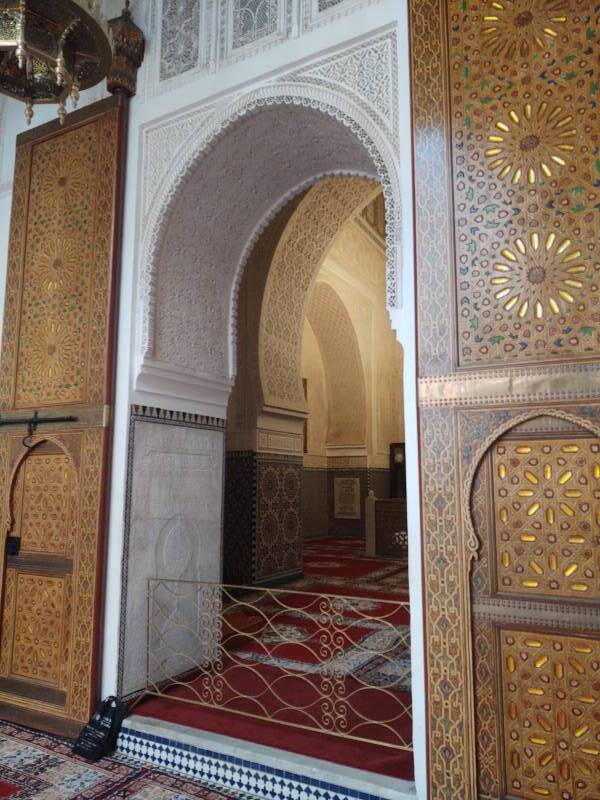
The mausoleum chamber is square, with the tombs of Moulay Ismail, his son and successor Ahmad ad-Dhahabi (died in 1729), and the later sultan Moulay Abd ar-Rahman ibn Hisham (died in 1859).
The tombs are flanked by grandfather clocks, gifts from King Louis XIV of France. Moulay Ismail had sent a request to Louis asking for the hand in marriage of one Mademoiselle de Nantes, one of his many illegitimate children. Louis sent these clocks instead.
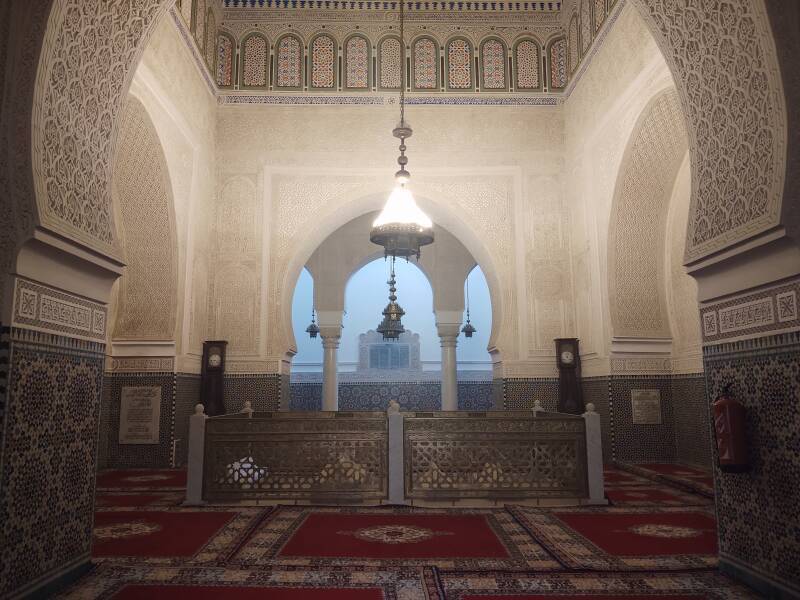
It's good to have plenty of time for your visit, so you can experience things in between groups of visitors. Wait for them to finish their posing. Eventually it was time for me to leave.
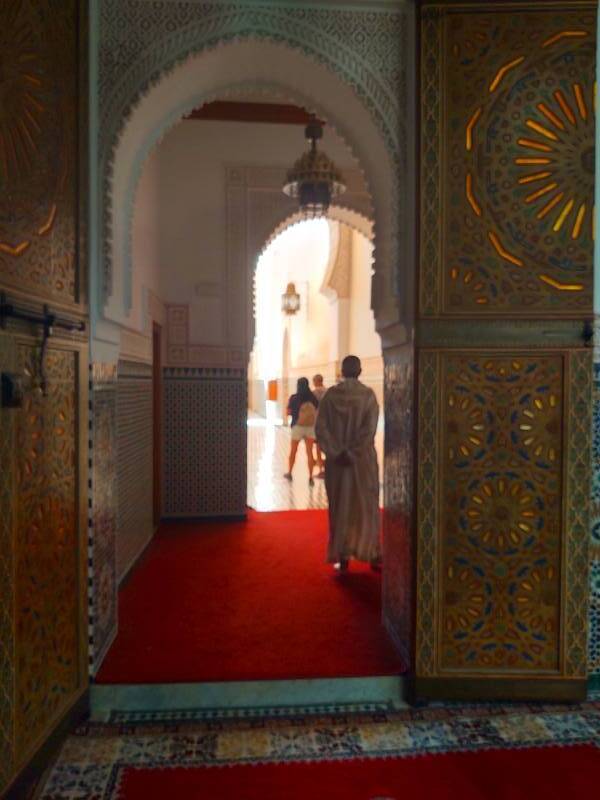
Now I would explore the medina of Meknès.